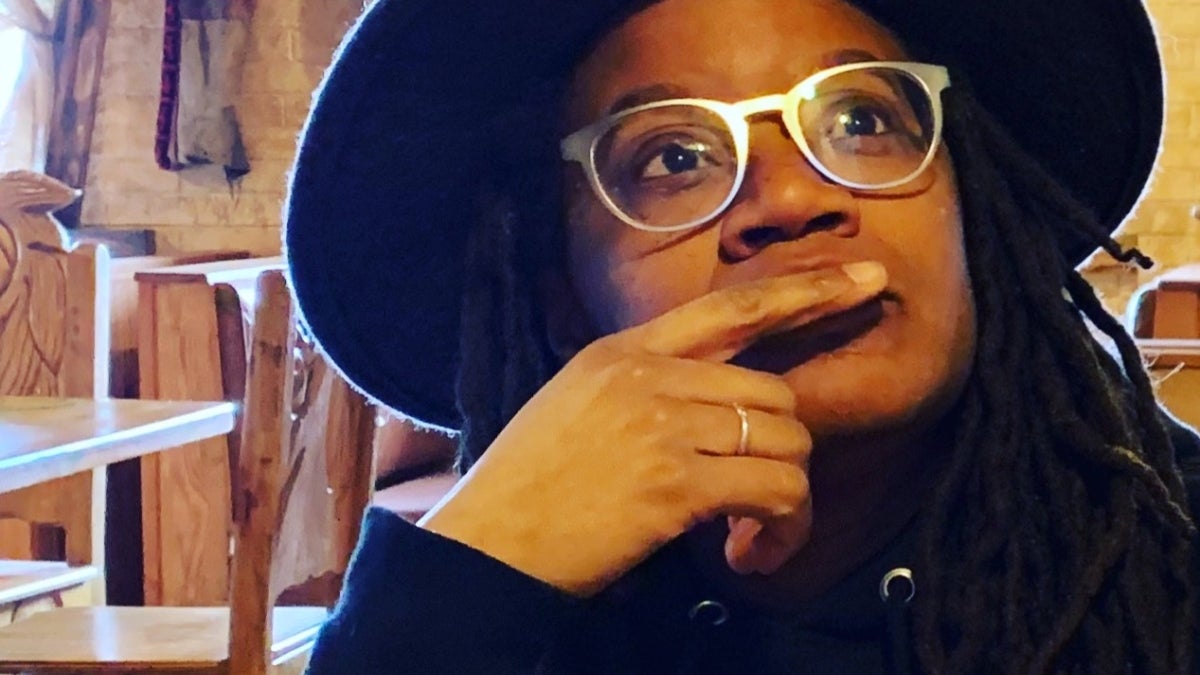CRUX co-founder joins ASU in pivotal cultural-sector field research

Lauren Ruffin is the co-founder of CRUX, an immersive storytelling cooperative that collaborates with Black artists creating content in virtual reality and augmented reality.
Lauren Ruffin, designer and thought leader working in the realm of racial equity, creative work and policy, is joining the Herberger Institute for Design and the Arts at Arizona State University for a nine-month residency.
The National Field Leader in Residence is a cornerstone program of the Herberger Institute’s National Collaborative for Creative Work, which seeks to bring artists, movement leaders, policy thinkers and investors together to reimagine healthy, equitable work futures for artists, designers and other creators.
Ruffin’s residency will combine research, a convening, public conversations, exploration and policy prototyping with students in a spring 2022 course. The National Field Leader in Residence program is specifically designed for non-academic leaders who are working at the cutting edge of workforce transformation, creative economy and social policy and are seeking to advance an area of their research in collaboration with ASU students, staff and faculty as well as local Tempe and Phoenix community members.
Ruffin is the co-founder of CRUX, an Albuquerque, New Mexico-based immersive storytelling cooperative that collaborates with Black artists as they create content in virtual reality and augmented reality (XR), and the former co-CEO of Fractured Atlas, the largest association of independent artists in the United States. She is serving as the interim chief marketing officer of Yerba Buena Center for the Arts and is a visiting faculty member at both NYU and Bennington College, where she teaches about arts work and the emerging practices, technology, labor and financial policies that intersect with content creators, particularly female, Black and Indigenous workers.
Ruffin is known for her innovative ideas and big questions about systems. One of the core research questions for her residency is, “Is it possible to radically reimagine credit underwriting for digital creatives via the development of alternative credit scores, character-based lending or a predictive lending tool?”
“Ruffin is at the front of a beautiful, possible future for creative work,” said Jen Cole, co-director of the National Collaborative for Creative Work. “We have an opportunity at the largest, most inclusive university in the country to imagine better futures for BIPOC creatives.”
Ruffin noted, “Creative work requires creative people to be healthy, wealthy and whole. I hope to push more — connecting with ASU’s assets in AI and in partnership with the collaborative and the School of Arts, Media and Engineering, I hope to bring major tech and platform players into the conversation alongside students and policy makers to shape a new type of character lending structure for digital creators. I hope to publish recommendations and findings from this residency alongside others we gather for an international convening planned for spring 2022. “
“This is a unique opportunity for our students to come together with global thinkers, technology experts, culture leaders and Lauren to co-create new knowledge and advance frontiers for digital culture, digital culture policy and economics," said Pavan Turaga, associate professor and director of the School of Arts, Media and Engineering. "I’m excited about this as a new model for engaged education. It supports our students, emerging cultural leaders, in hands-on, practice-based work, and we’re excited to host Lauren’s spring course.”
At 4:30 p.m. Arizona time, Thursday, Nov. 18, Ruffin will discuss her work in a YouTube livestream broadcast, supported by the School of Arts, Media and Engineering’s Digital Culture Speaker Series. Her talk is titled “#FYPM: Challenges and Opportunities of Securing the Bag in the Creative Economy.”
For more information on Ruffin’s applied research, supported by the National Collaborative for Creative Work and the School of Arts, Media and Engineering, visit herbergerinstitute.asu.edu/national-collaborative and follow updates, announcements and events on Twitter and LinkedIn.
More Science and technology

Lucy's lasting legacy: Donald Johanson reflects on the discovery of a lifetime
Fifty years ago, in the dusty hills of Hadar, Ethiopia, a young paleoanthropologist, Donald Johanson, discovered what would…

ASU and Deca Technologies selected to lead $100M SHIELD USA project to strengthen U.S. semiconductor packaging capabilities
The National Institute of Standards and Technology — part of the U.S. Department of Commerce — announced today that it plans to…

From food crops to cancer clinics: Lessons in extermination resistance
Just as crop-devouring insects evolve to resist pesticides, cancer cells can increase their lethality by developing resistance to…